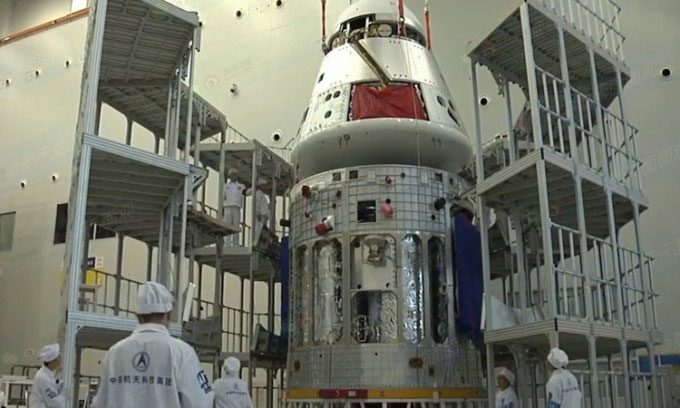China’s New Spacecraft Can Carry 7 Astronauts and Its Main Components Are Reusable Up to 10 Times, Significantly Reducing Costs.
The first reusable spacecraft from China is expected to launch as early as 2027, according to Yang Liwei, deputy director of the manned space program. On July 17, Yang announced that the new spacecraft can carry 7 astronauts. This capability will be crucial for constructing China’s space station and for lunar landing missions.

China’s reusable spacecraft will support missions to land humans on the Moon. (Photo: SpaceNews).
According to the China Manned Space Engineering Office, this spacecraft is designed for reuse both for low Earth orbit missions and for deep space exploration. A full-scale prototype successfully completed a 67-hour test flight on a Long March 5 rocket in 2020. The spacecraft uses new materials and thermal-resistant structures that are 3 to 4 times better than those used in the Shenzhou spacecraft. The materials on board can withstand temperatures up to nearly 1,650 degrees Celsius during reentry, while the weight of the structure has been reduced by more than 30%.
The spacecraft is also designed to be ready for its next mission as soon as inspections and coatings are completed. In theory, at least the essential components of the spacecraft can be reused 10 times, significantly lowering launch costs. According to Zhou Jianping, chief designer of the manned space program in China, the latest design retains the blunt-nosed shape but offers a larger interior space compared to its predecessor, streamlining from 3 compartments to 2, which enhances safety and cost-effectiveness.
With a capacity to carry 7 astronauts, this spacecraft can compete with the new generation of crewed spacecraft from the United States, such as SpaceX’s Dragon V2 and Boeing’s CST-100 Starliner. NASA’s Orion Multi-Purpose Crew Vehicle (MPCV) can carry 6 people. Measuring 8.8 meters in length and weighing 21.6 tons, it is also more than double the weight of the Dragon V2 (9.5 tons). The new spacecraft will be utilized in China’s program to land humans on the Moon, in conjunction with landers, crewed rovers, and various other equipment, aiming for this goal by 2030.


















































